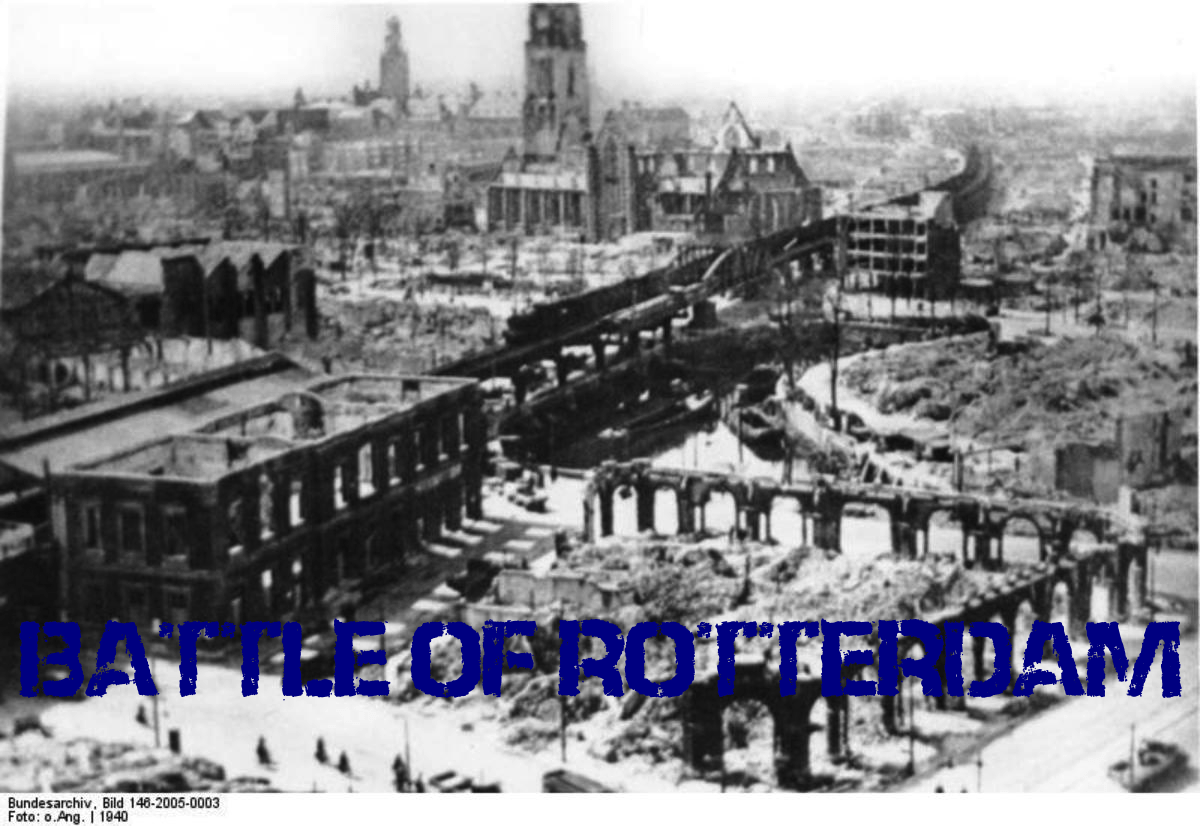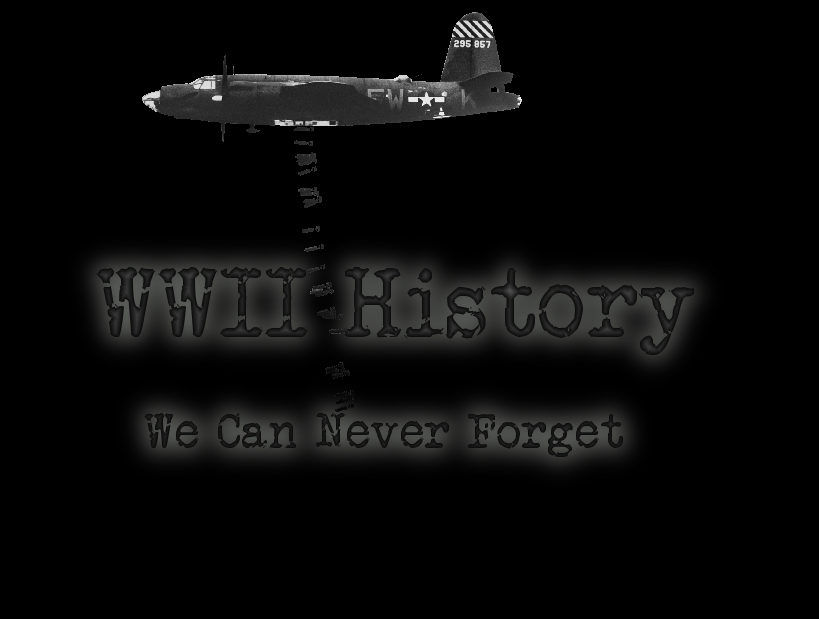Battle of Rotterdam
The battle began on May 10, 1940 and lasted for four days, ending with dreadful bombings. The Nazis chose to take over the Netherlands because they believed that it would be the ideal place for an Air Force base. For one, Rotterdam was a port town. A port town that just happened to be in close proximity to Britain, Hitler’s dream target.
The Dutch, on the other hand, had wanted to remain neutral in this war, much liked they done last time. In large part, the Dutch wanted to remain neutral because they knew that their military just didn’t have what it would take to stand up against the Axis powers. They were woefully lacking in military necessities such as aircraft, vehicles, and . . . oh, troops.
Hitler was sure that he could capture and occupy the Netherlands in just one short day of battle. Little did he know that the Dutch would put up such a big fight.
Now, while the Dutch didn’t necessarily have the number of troops needed to take part in a world war, they also weren’t necessarily lacking in troops. In fact, in the Rotterdam neighborhood of Hillegersberg was an artillery battalion with some 7,000 men. In nearby areas they had machine guns, cannons, and even the Royal Netherlands Air Force. Their biggest problem was simply that they just weren’t equipped enough to fight against the Nazis, who’d been preparing for battle for years.
Whether Hitler was aware of the seize of the Netherland’s military or not, his initial plan was for his own task force to attack Rotterdam and seize its bridges, all using the advantage of surprise. This plan was scrapped, however, and in its place was born the idea to use Heinkel He 59D’s. Much easier to surprise the Dutch with parachutists. They could easily capture the bridges, especially with even more men in the air for cover.
So, early May 10th, 80 Nazi soldiers landed. They easily captured several bridges. So far, there was no resistance. Everything was going as planned.
What they didn’t realize was that the Dutch troops were hiding in houses along the various routes to the bridges. They ambushed the approaching Germans. Meanwhile, another group of Dutch were waiting in the square. Turns out, they had been alerted to the German arrival by the sound of their plans. Yes, this was the same problem the Germans ran into over in the Hague . . . on the same exact morning.
Even though the garrison was run by a lonely captain, he quickly assembled his men and sent them out around town to places such as bridges, railway stations, and along the Nieuwe Maas.
Meanwhile, “a small delegation of Dutch Marines and an incomplete army engineers company” took positions north of the bridges and began deploying machine guns (Source). They were able to push the Germans back into a small perimeter by a mere traffic bridge – which probably isn’t exactly what the Germans had in mind when the planned to “take” Dutch bridges.
The Dutch continued to push and, gradually, the German pocket grew smaller and smaller. Later in the morning, they were gratefully aided by the Dutch Navy – however small their contingent may have been with only a small gunboat and a motor torpedo boat. Unfortunately, Luftwaffe bombs caused serious damages to the two boats, causing 3 deaths.
It was difficult, but the Dutch were able to hold out until that afternoon. It was then that German help in the form of the 10th Company of the 16th Air Landing Regiment.
But the Dutch continued to push the Germans back until the Germans withdrew into a National Life Insurance Company building. Turned out, this was better for the Germans than the Dutch. For one, the Germans had been reinforced with more anti-tanks guns. Furthermore, their location inside the building proved to hamper the Dutch.
[Below: Destroyed Rotterdam]

The next morning, the Dutch actually received reinforcements. After reorganizing them, Colonel Scharroo deployed them along the river. Then, at 4:00, the fighting continued. That being said, the Dutch still failed to infiltrate the National Life Insurance building. But, at the same time, the Nazis had failed to replenish their weapons. But, then the Royal Netherlands Air Force stepped in, bombing bridges. They missed their intended targets, but somehow managed to take out several machine gun nests, instead. Which was responded to by Messerschmitt Bf 110s. In all, five German plans were lost and 3 Dutch ones. But of course, the Germans had many more planes to spare than the Dutch did. At the same time, the SS Statendam was bombed, catching fire.
On the 13th, the Marines came to lend aid. Unfortunately, as they advanced, they came under German attack. Germans also attacked the two Dutch armored cars trying to cross the bridge. They were forced to retreat without firing on the insurance building. But then the Marines, previously unaware that the Nazis had overtaken the insurance building, came under German even more fire. The Marines returned fire, but after several casualties, were forced to retreat. They found shelter under the bridge. They were fired on again and had to retreat even further.
“After the war, the German occupants of the insurance building admitted that they had been on the verge of surrender. They were very short on ammunition, half of them had been wounded, and they had reached the point of utter exhaustion. But just when they were about to yield, the marines disappeared” (Source).
It had become clear that everything rested on the defense of Rotterdam’s two bridges. So, they put seven infantry companies, 3 anti-tank guns for each bridge. Additionally, three batteries of 105 mm howitzers were placed at Kralingse Plas bridge. In the meantime, three German tanks arrived, starting an all-out tanks assault. They were met by great Dutch opposition.
Then Hermann Göring stepped in. He decided that the best course of action was for an all-out aerial attack. Then, General Georg von Küchler, the Dutch operational area commander-in-chief, sent the Dutch an ultimatum: Unconditional surrender of the city was being demanded.
Finally, on the morning of May 14, the letter was delivered to General Scharroo. The Dutch insisted on a final notice with the German officer’s signature, name, and rank.
It was during this time, that Göring ordered the attack. A group of 27 bombers arrived to the south of the city. Aware of the attack, the Germans raised a red flare. Seeing this, 24 of the bombers turned and headed west. The remaining three dropped their payload.
“About one square mile of the city was completely destroyed. In total, over 25,000 buildings were leveled. Below is the breakdown of the type of buildings destroyed
24,978 homes
2,320 businesses
24 churches
62 schools
775 warehouses” (Source).
Only a handful of buildings survived. One of these building was the 1898 high-rise, Witte Huis. It did receive some damage; the bullets holes of which can be seen to this day. Rotterdam, itself, was set ablaze. As bombs were dropping, many of the buildings that were struck caught fire. They became uncontrollable. “Over the course of a week, the fires began to join and create one huge inferno. It’s been said that after night, on the first night after the bombings, the sky was red from all the fires” (Source).
With their city on fire, it didn’t take long for the Dutch to surrender. Immediately, Germans took control of the city, ablaze or not. The following day, the British began bombing the Ruhr in retaliation.
It is reported that the Dutch casualty toll was somewhere around 1,000. However, thanks to German occupation, some 85,000 citizens were now homeless.
[Below: Rotterdam burning]


